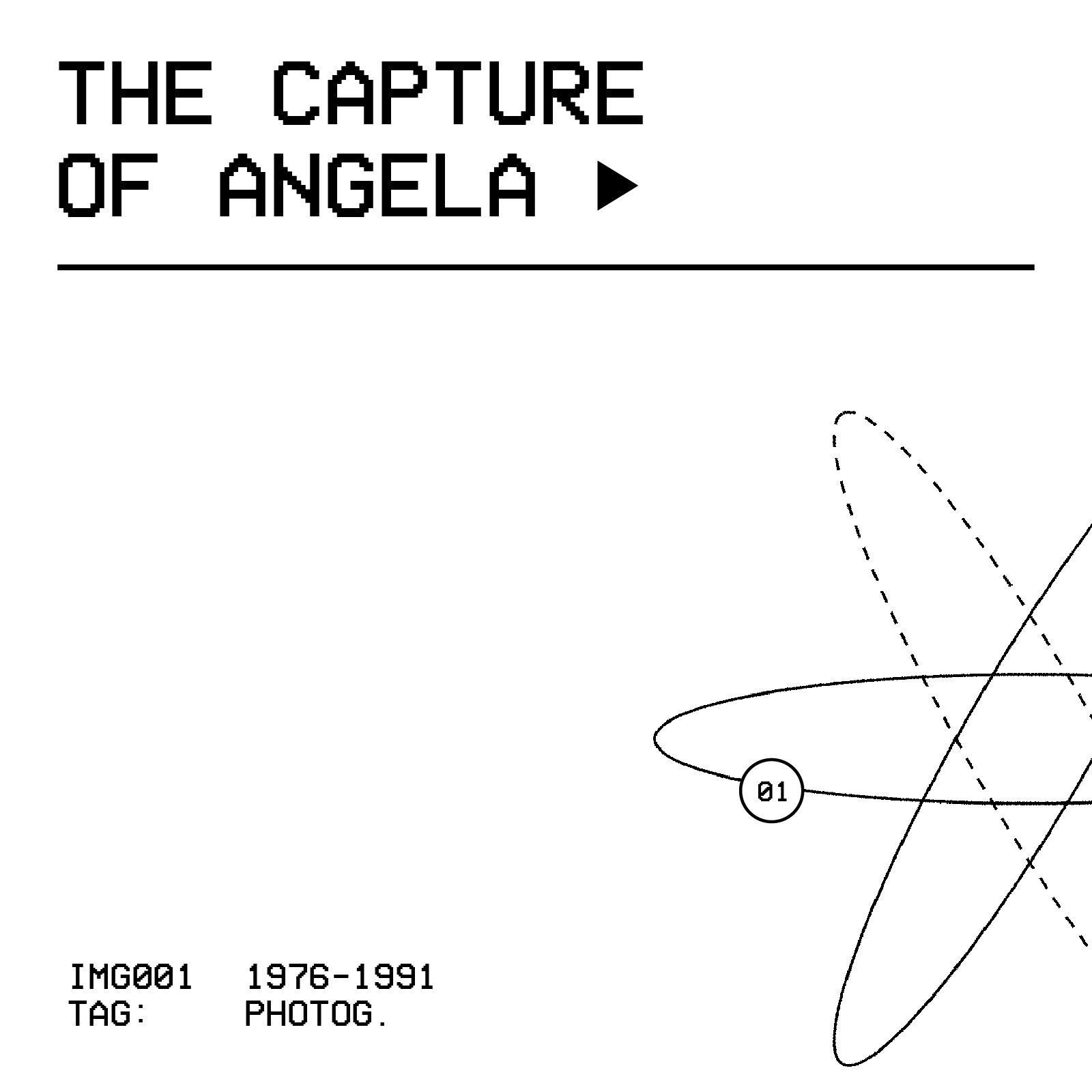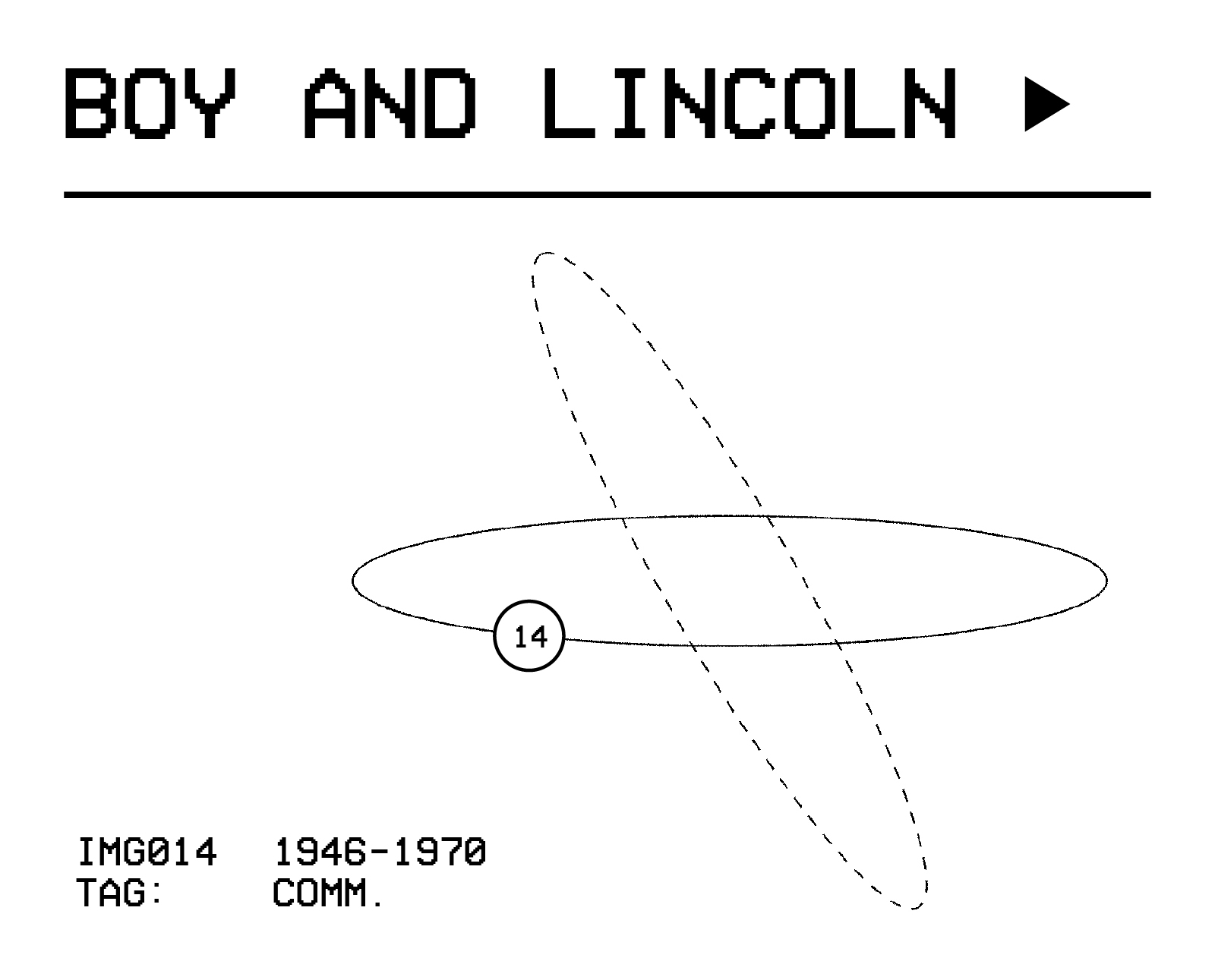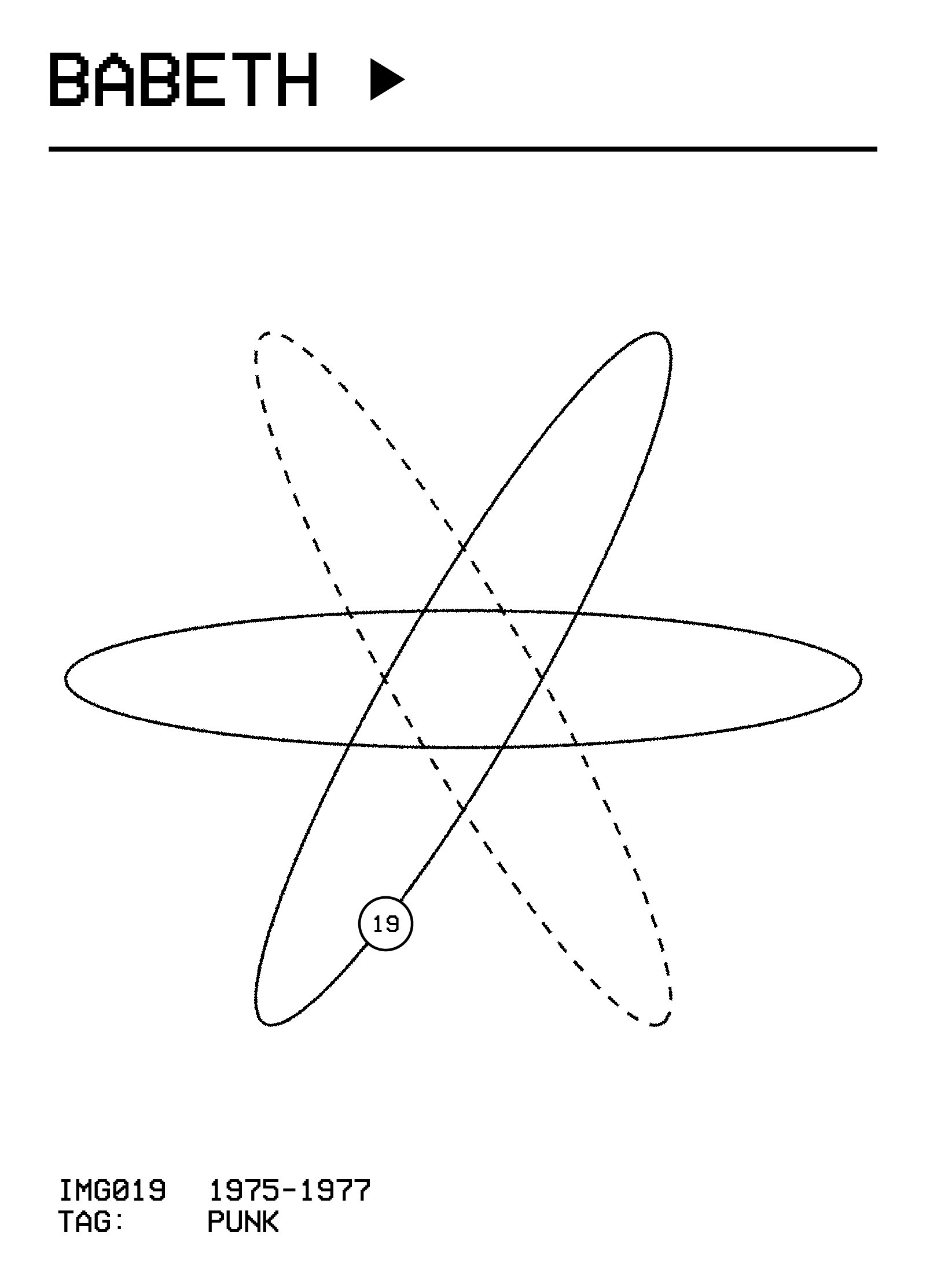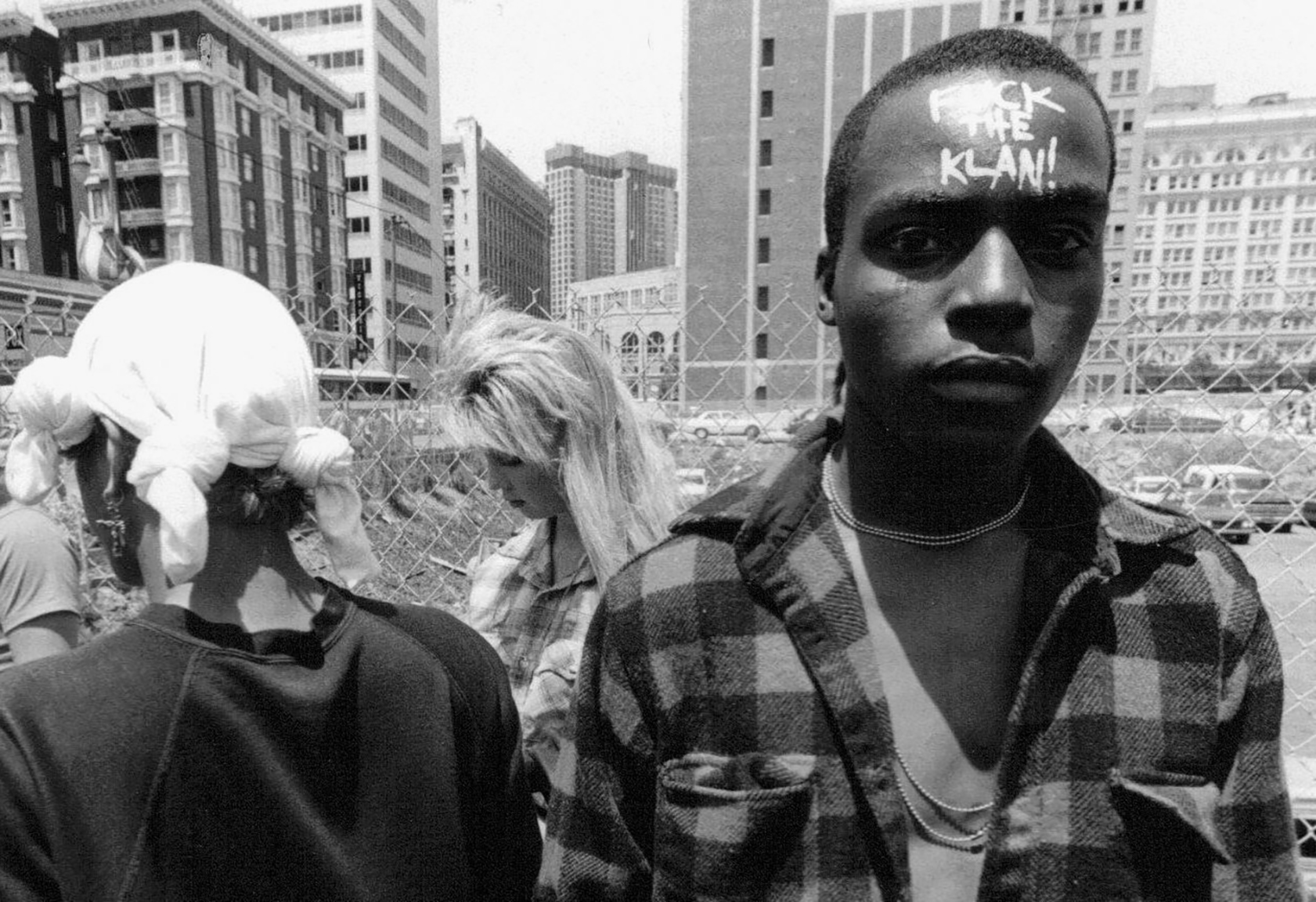
F*ck the Klan
Author
Nina Zurier
Decades
1970s 1980s
Tags
Activism Music Photography Politics Punk Rock
Racial Justice
As a teenager growing up in Brooklyn in the 1960s, Stanley Greene joined the Black Panthers and was active in the anti–Vietnam War movement. Greene studied photography first at the School of Visual Arts in New York, with W. Eugene Smith, and then at SFAI. This photograph was taken in downtown San Francisco not long after Greene arrived in San Francisco, during a resurgence of Ku Klux Klan activity in Contra Costa County near Oakland; other students at SFAI were involved in protests against them. In the 1920s, the Oakland Klan chapter had thousands of followers, and in 1925, eighty-five hundred people participated in a cross-burning ceremony inside the Oakland Auditorium (now known as the Kaiser Convention Center).
In addition to his political activism, Greene photographed the city’s punk scene in the 1970s and ’80s. In his book The Western Front (2014), Greene describes the scene: “I began photographing musicians in 1975, in fact they were my roommates, the punk movement was just starting, so sometimes I took a picture. . . . But in San Francisco, it was special. It was called ‘Art and Music.’ The Mutants, The Dills, Flipper, Crime, SVT, The Yanks, Tuxedo Moon, The Tubes, Los Lobos, The Avengers, Dead Kennedys and Romeo Void, U2. Many of them were students at the San Francisco Art Institute. Members of The Mutants and Romeo Void of course. Chris Isaac of Silver Tones, too, and Bonnie Hayes & The Wild Bunch—Bonnie Hayes, one of the coolest girls in the punk scene. I was surrounded by these rock bands, both punks and artists. Suddenly these groups wanted images. They’d call me and say: ‘Stanley, I know you have pictures, you know, this magazine wants to do an article about us, etc.’ And without realizing it, I became a professional photographer while still an art student . . .”
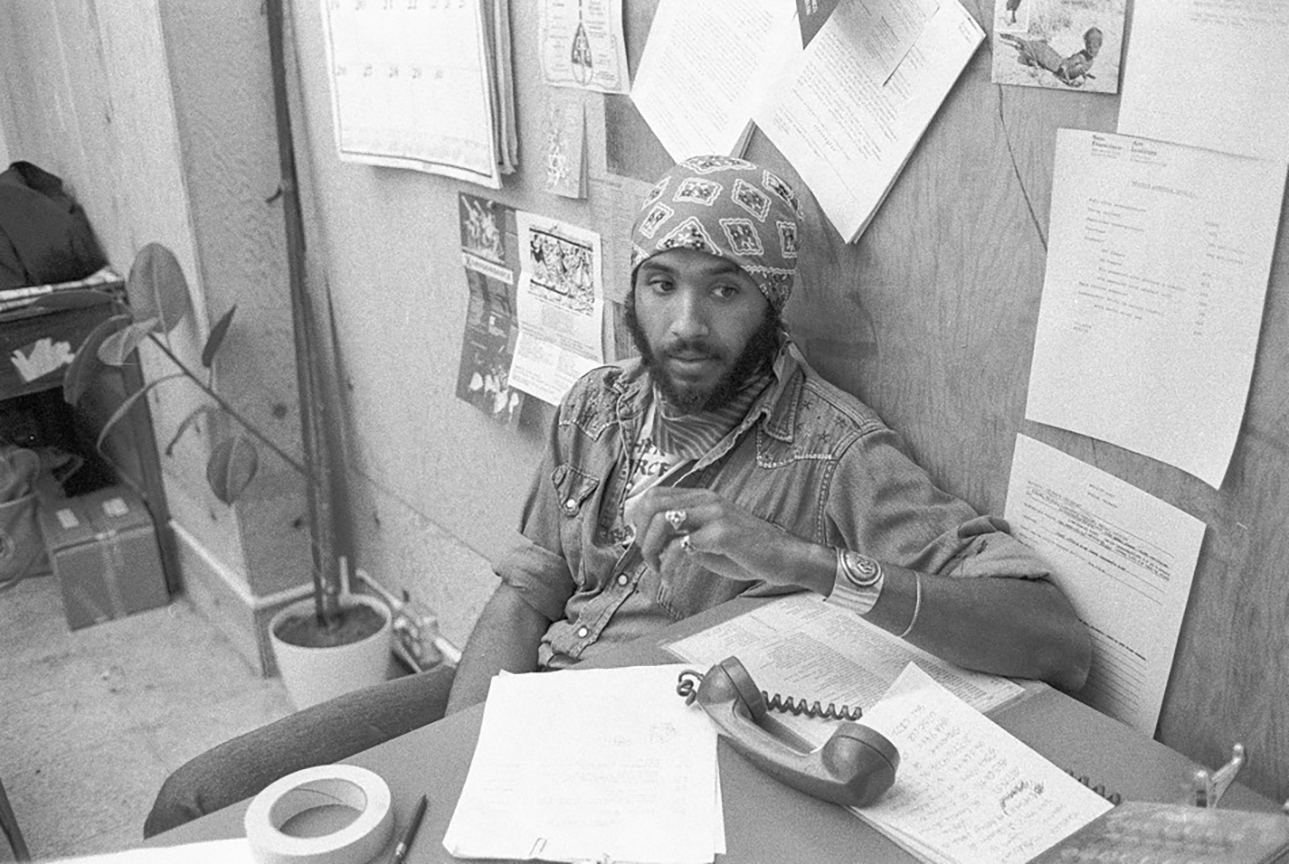
In the 1980s Greene went to Paris and worked as a fashion photographer before joining Agence VU and turning to conflict reportage. He became one of the top journalism photographers, covering stories of violence and catastrophe around the world. Beginning in 1993, he was based in Moscow, working for Liberation, Paris Match, Time, New York Times Magazine, Newsweek, and Le Nouvel Observateur, as well as other international news magazines. In October 1993, Stanley was trapped and almost killed in the White House in Moscow during a coup attempt against Boris Yeltsin. He was the only Western journalist inside to cover it. Two of his resulting pictures won World Press Photo awards.
“Photography is my language and it gives me the power to tell what otherwise is not told,” Stanley Greene said. “Eugene Smith told me vision is a gift, and you have to give something back.”
In the early 1990s, Greene went to Southern Sudan to document the war and famine there for Globe Hebdo (France). He traveled to Bhopal, India, again for Globe Hebdo, to report on the aftermath of the Union Carbide gas poisoning. From 1994 to 2001, Greene covered the conflict in Chechnya between rebels and Russian armed forces. His in-depth coverage was published in the monograph Open Wound: Chechnya 1994–2003 (Trolley, 2003) and in Dans les montagnes où vivent les aigles (Actes Sud, 1995). The work also appeared in Anna Politkovskaya’s book A Dirty War: A Russian Reporter in Chechnya (2001). In 1994, Greene was invited by Médecins sans Frontières to document their emergency relief operations during the cholera epidemic in Rwanda and Zaire. He covered conflict and aftermath in Nagorno-Karabakh, Iraq, Sudan, Darfur, Afghanistan, Kashmir, and Lebanon.
Greene was awarded a Katrina Media Fellowship from the Open Society Institute in 2006. In 2010, to mark the fifth anniversary of Hurricane Katrina—together with Dutch photographer Kadir van Lohuizen—Greene made Those Who Fell Through the Cracks, a collaborative project documenting Katrina’s effects on Gulf Coast residents. Greene and van Lohuizen cofounded NOOR Agency in 2007, which holds his archive. Greene died in 2017.
NZ

